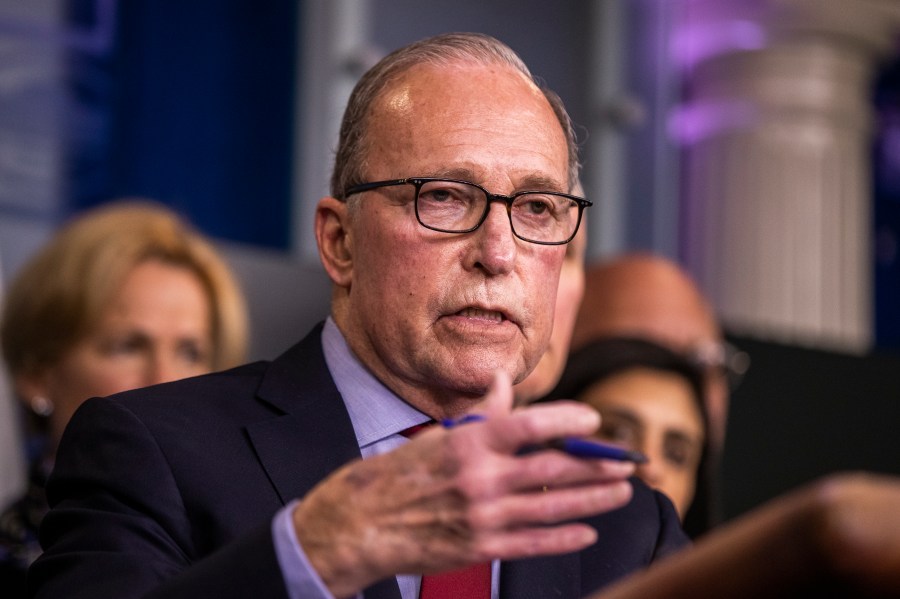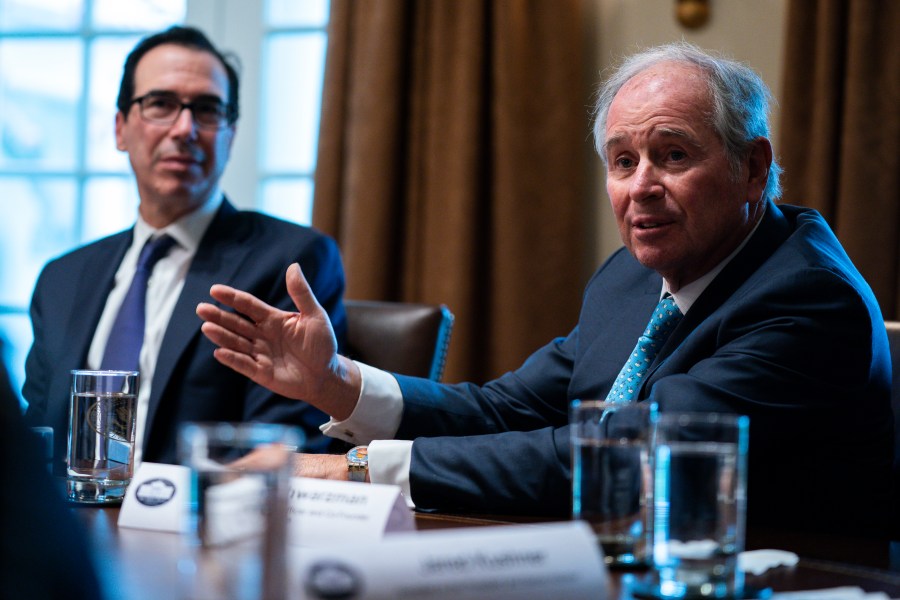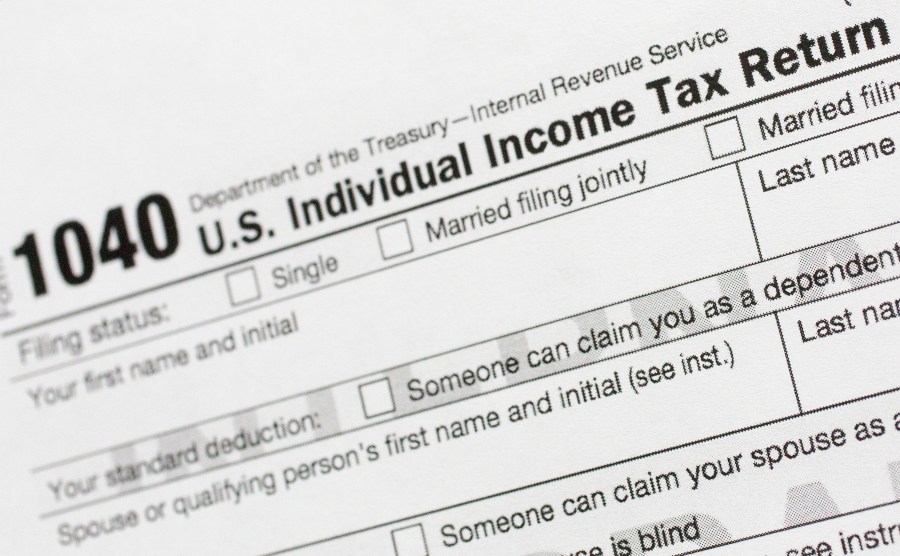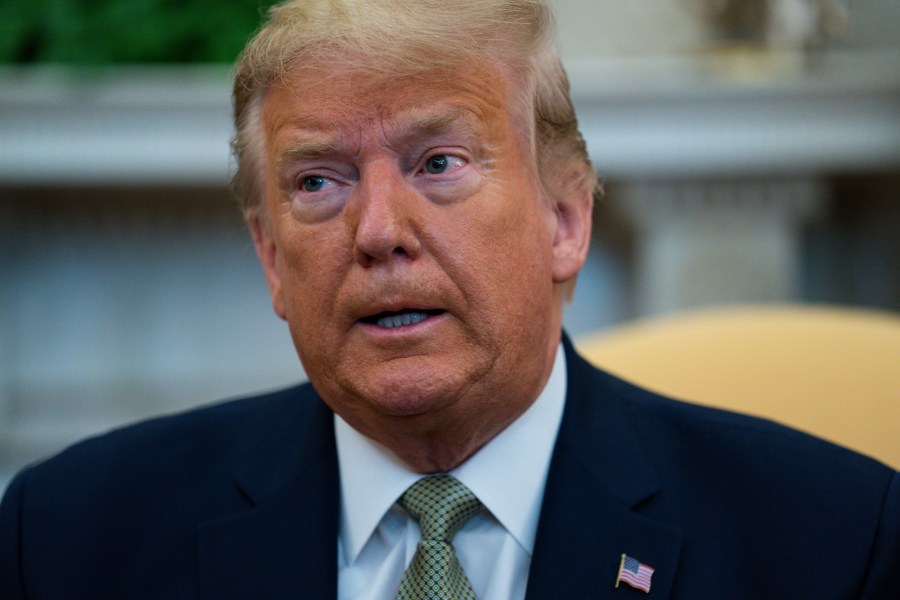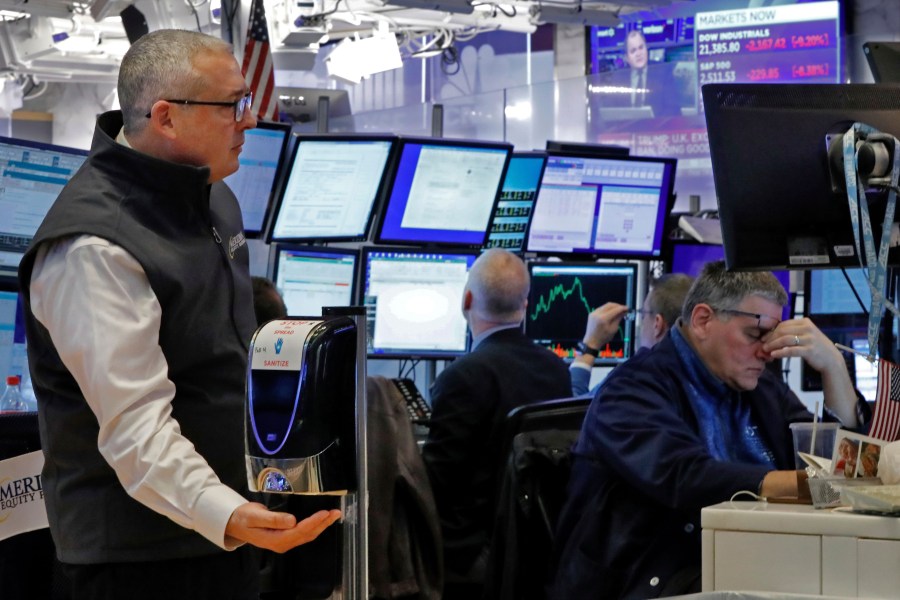WASHINGTON (AP) — During the financial crisis a decade ago, President Barack Obama could look around the room and turn to an economist who served as Harvard’s president, a former president of the New York Federal Reserve and a renowned academic considered one of the world’s authorities on the Great Depression.
As President Donald Trump confronts the public health and economic maelstrom caused by the coronavirus, his economic team has a much different background.
His top economic adviser, Larry Kudlow, is a former financial analyst who was a commentator on CNBC. His treasury secretary, Steve Mnuchin, is a Goldman Sachs veteran and former Hollywood producer whose credits include the 2016 film “Rules Don’t Apply.”
The threat from the pandemic has sent markets plummeting and created grave uncertainty about broader effects that could turn an economy Trump relentlessly showcases to one that leaves Americans struggling and puts the president’s central argument for reelection at risk.
The collapse in stock and oil prices has become the most important test of Trump’s economic leadership team. Unlike the impeachment process that ended with Trump’s acquittal last month, there is no partisan backstop that can halt infections or restore confidence to shuddering financial markets.
“We need an adult in the room to manage these issues,” said Kenneth Rogoff, a Harvard economist and co-author of “This Time Is Different: Eight Centuries of Financial Folly,” a global history of financial crises. “Obama had an extraordinary team and so did Bush. There were great men that rose to the occasion. The current Fed team in place is very strong, but they’re not central to response here. They can help at the margins.”
Rogoff, who believes the chances of a global recession have risen dramatically with the health crisis, said he also worries about the Trump team’s ability to navigate the unpredictability of politically fraught negotiation.
On one hand, he said that he worries that Trump could undercut Mnuchin, who is leading negotiations with House Speaker Nancy Pelosi, D-Calif., on an economic package to address the crisis. The economist said he’s also concerned that Democrats might be tempted to torpedo a deal to weaken Trump politically in the months before the November elections.
Diane Swonk, chief economist at Grant Thornton, said Trump arrived at the crisis with a short bench at the Treasury Department and has failed to appoint a permanent chairman to the White House Council of Economic Advisers, a key group of administration economists who advise the president on a range of economic policies. Tomas Philipson a University of Chicago economist and former George W. Bush administration official, has been serving as acting chairman for the council since June.
“The things that we usually rely on in the middle of a crisis — usually a big group of talented bureaucrats — we just don’t have there,” Swonk said. “Clearly the administration is further behind than I’d like, because it took until this week to talk about economic measures. They got ahead of themselves when they said they had a plan, when they didn’t.”
For most people, the new coronavirus causes only mild or moderate symptoms, such as fever and cough. For some, especially older adults and people with existing health problems, it can cause more severe illness, including pneumonia.
The vast majority of people recover from the new virus. According to the World Health Organization, people with mild illness recover in about two weeks, while those with more severe illness may take three to six weeks to recover. In mainland China, where the virus first exploded, more than 80,000 people have been diagnosed and more than 68,000 have so far recovered.
Trump has moved more aggressively in recent days, meeting with leaders of banks, insurance companies and health care providers in an effort to calm market fears, so far with limited success. He addressed the nation Wednesday night and announced that he was sharply restricting travel from Europe for a month and that the government will defer certain tax payments for individuals and businesses for three months to lessen the pain of the virus outbreak.
Now the administration must work with Congress over how to best address the crisis, with proposals ranging from a payroll tax holiday to large-scale fiscal stimulus.
“There is no one on that team that has a real experience and understanding of fiscal stimulus,” said Jared Bernstein, a former economic adviser to Vice President Joe Biden during the Obama administration. He said he’s spoken to Kudlow about ideas to assist hourly workers impacted by the coronavirus outbreak. “That said they can mitigate that problem, because there are lots of people, lots of economists with those experiences. The question is: Will they reach out?”
Mnuchin this week tried to assuage Americans who have watched their retirement savings sink by saying that this crisis is likely to have an end in sight, unlike the financial crisis. Kudlow has suggested that it may be a good time to buy stocks on the cheap.
Trump, who in late January boasted that U.S. officials had coronavirus “very well under control,” has called on Americans to “calm down” as he seeks to blunt the economic and health-related damage caused by the outbreak.
“This is a one-time event,” Mnuchin said during Wednesday testimony before a House Appropriations subcommittee. “I couldn’t be more pleased that the U.S. economy is the most resilient in the world, and we will get through this very successfully.”
Trump predicted “tremendous pent-up demand” will boost the economy once the crisis passes. But he also seemed to acknowledge that his version of a payroll tax cut faced long odds. Een as he called for major stimulus to stabilize the stock market and address concerns that the U.S. is headed toward a recession, Trump insisted in an Oval Office address to the nation that the economic pain will be temporary.
“This is not a financial crisis,” he said. “This just a temporary moment of time that we will overcome together as a nation and as a world.”
Paul Winfree, a former White House domestic policy adviser in the Trump administration, said the administration has plenty of firepower to deal with the crisis and that Trump has been well-served by his advisers. But Winfree said he’s concerned that the administration and Democrats are pushing for measures, such as the temporary payroll tax cut, that aren’t directly related to the coronavirus outbreak.
“If I were the treasury secretary or leading the administration response to this, I’d be viewing this as we’re at the forefront of a demand-side shock … that will have real economic consequences,” said Winfree, who is now an economic policy analyst at the Heritage Foundation, a conservative think tank. “But let’s address the cause of the hemorrhage. And the cause of the hemorrhaging right now is the coronavirus.”
Trump’s push for a payroll tax cut was met with a lack of enthusiasm even by many Republicans and White House aides, who were either unsure it was needed or weren’t convinced that it was the best way to address the crisis, according to administration officials who were not authorized to publicly discuss the matter and spoke on condition of anonymity. The president wants the yet-to-be-detailed tax cut to run through the end of the year, ensuring that workers would benefit from it through his reelection effort.
Republicans say Trump’s chances at getting a deal ultimately come down to what Mnuchin can work out with Pelosi. The speaker, who spent time with Mnuchin on Tuesday and Wednesday, described her relationship with the treasury secretary as “professional.”
For most people, the new coronavirus causes only mild or moderate symptoms, such as fever and cough. For some, especially older adults and people with existing health problems, it can cause more severe illness, including pneumonia.
The vast majority of people recover from the new virus. According to the World Health Organization, people with mild illness recover in about two weeks, while those with more severe illness may take three to six weeks to recover. In mainland China, where the virus first exploded, more than 80,000 people have been diagnosed and more than 68,000 have so far recovered.
___
Associated Press writers Matthew Daly and Andrew Taylor contributed to this report.
___
The Associated Press receives support for health and science coverage from the Howard Hughes Medical Institute’s Department of Science Education. The AP is solely responsible for all content.
